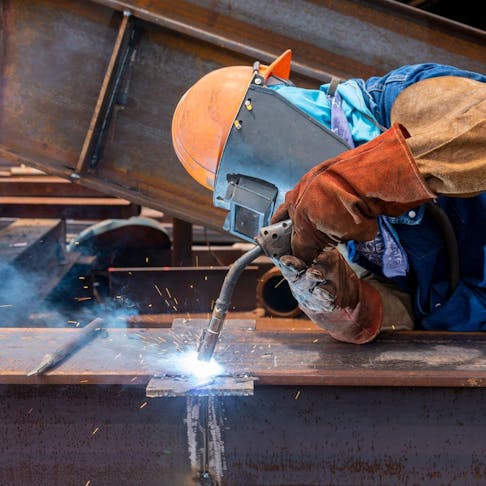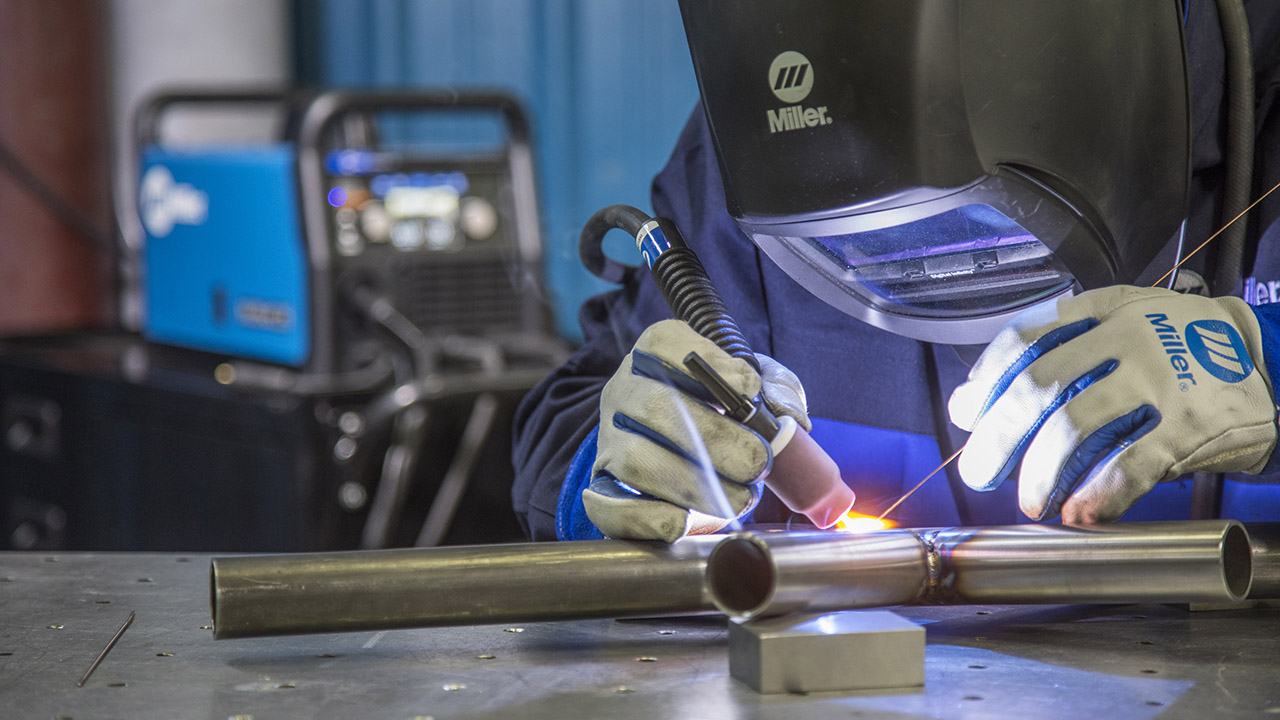All Regarding Welding: Key Insights Into Techniques and Best Practices for Success
Welding encompasses a selection of techniques, each suited for details products and applications. Understanding these methods, such as GMAW, SMAW, and TIG, is vital for accomplishing optimal outcomes. The right equipment and security techniques can not be forgotten. As prep work and repairing play critical functions in the welding process, grasping these aspects can considerably improve the top quality of the end product. What are the essential variables that assure an effective weld?
Recognizing Different Welding Techniques
Welding strategies include a range of methods, each suited to certain applications and materials. Amongst one of the most typical methods are Gas Steel Arc Welding (GMAW), Protected Metal Arc Welding (SMAW), and Tungsten Inert Gas Welding (TIG) GMAW, likewise called MIG welding, is popular for its speed and flexibility, making it optimal for thin products. SMAW, or stick welding, is favored for its simpleness and efficiency in outside environments, particularly with thicker metals. TIG welding supplies accuracy and control, making it suitable for complex work and non-ferrous steels (Belgrade Welding). Each technique has its one-of-a-kind advantages and factors to consider, permitting welders to choose the most effective method based on the task's needs, material kind, and preferred results. Comprehending these strategies is vital for effective welding
Necessary Welding Equipment and Devices
While numerous welding methods call for specific skills, the best devices and devices are equally necessary for achieving high quality results. Essential welding tools consists of welding makers, which differ depending on the method-- such as MIG, TIG, or stick welding. Protective equipment, including aprons, headgears, and gloves, assurances security and comfort during the procedure. Furthermore, components and clamps help protect materials in position, ensuring accuracy in welds. Consumables like welding poles, wire, and protecting gas are likewise critical components that affect the quality of the weld. Devices such as cutters and mills facilitate surface preparation and post-weld ending up, adding to a specialist outcome. Buying top quality devices inevitably improves the effectiveness and effectiveness of welding tasks.
Safety And Security Practices in Welding
Correct security techniques are crucial in the welding market to safeguard workers from prospective threats. Welders should wear appropriate personal protective devices (PPE), consisting of safety helmets with proper shading, handwear covers, and flame-resistant garments. Appropriate air flow is important to minimize exposure to harmful fumes and gases created during the welding process. In addition, employees need to be educated in the appropriate handling of welding devices to prevent crashes. Fire safety and security procedures, such as maintaining combustible products far from the welding location and having fire extinguishers conveniently offered, are necessary. Regular assessments of devices and workspaces can help recognize potential risks prior to they cause crashes. By sticking to these safety methods, welders can develop a much safer working setting and reduce risks related to their profession.
Preparing Materials for Welding
Preparing products for welding is an important step that considerably affects the high quality and honesty of the end product (Montana Mobile Welding and Repair Belgrade). Proper prep work involves cleaning the surface areas to remove contaminants such as rust, oil, and dust, which can compromise the weld. Methods such as grinding, fining sand, or utilizing solvents are frequently employed to attain a clean surface area. In addition, ensuring that the products mesh snugly is vital; voids can result in weak welds. It's likewise essential to consider the alignment and positioning of the parts, as this will influence the convenience of welding and the final result. Choosing the ideal filler product and guaranteeing compatibility with the base steels is necessary for achieving solid, sturdy welds.
Tips for Getting High-Quality Welds
Attaining high-grade welds needs focus to information and adherence to ideal practices throughout the welding process. Proper joint preparation is necessary, ensuring surfaces are totally free and tidy from impurities. Selecting the proper filler material and welding strategy based upon the base steels is vital for optimal bonding. Maintaining constant traveling rate and angle while welding can stop flaws and promote uniformity. In addition, controlling warm input is essential; too much heat can cause warping and weakened joints. Regularly evaluating the welds throughout the procedure enables for prompt changes if required. Ultimately, using ideal post-weld treatments, such as cleansing and stress alleviation, can enhance the resilience and integrity of the weld, eventually making sure a successful result.
Fixing Usual Welding Issues
Welding often offers difficulties that can impact the top quality and stability of the end product. Common problems such as porosity, inconsistent weld grains, and getting too hot can arise, each requiring details repairing techniques. Understanding these problems is vital for welders to enhance their abilities and achieve suitable outcomes.
Porosity Troubles Discussed
Although porosity can often be forgotten, it remains a crucial problem in welding that can jeopardize the stability of an ended up product. Porosity describes the visibility of small gas pockets within the weld bead, which can weaken the joint and lead to premature failure. This problem generally emerges from impurities, dampness, or incorrect protecting gas coverage during the welding process. To minimize porosity, welders ought to validate that the base products are clean and completely dry, make use of appropriate protecting gases, and maintain consistent welding specifications. Frequently evaluating the equipment and environment can also aid recognize potential issues prior to they materialize in the weld. Attending to porosity effectively is crucial for accomplishing solid, long lasting welds that fulfill quality criteria.

Irregular Weld Beans
Inconsistent weld beads can substantially affect the top quality and toughness of a completed item. Different elements contribute to this problem, consisting of improper traveling speed, incorrect amperage setups, and irregular electrode angles. When the welder relocates too rapidly, a grain might show up slim and lack infiltration, while relocating too gradually can create extreme buildup. In addition, making use of the incorrect amperage can lead to either undercutting or excessive spatter, both of which concession weld integrity. The welder's strategy, visit this site such as irregular lantern movement, can likewise result in irregular grain appearance. To alleviate these troubles, welders should concentrate on preserving steady, controlled activities and ensuring proper devices setups to attain harmony in their welds. Consistency is crucial to accomplishing reliable and strong welds.
Overheating and Warping Issues
Excessive warm throughout the welding procedure can bring about considerable overheating and contorting problems, affecting the structural stability of the work surface. These problems typically manifest as distortion, which can jeopardize positioning and fit-up, making more setting up testing. Aspects adding to overheating include the option of welding parameters, such as voltage and travel rate, in addition to the kind of material being welded. To minimize these concerns, welders should preserve constant traveling speed and suitable warmth input while keeping track of the workpiece temperature. Additionally, preheating or post-weld warm therapy can aid relieve stress and anxieties triggered by rapid cooling - Fabrication. Routine evaluation and adherence to ideal practices are necessary in preventing getting too hot and guaranteeing the durability and reliability of welded frameworks
Regularly Asked Inquiries
What Are the Job Opportunities in the Welding Industry?
The welding sector offers varied occupation possibilities, including placements as welders, designers, educators, and examiners. Specialists can work in production, building, aerospace, and vehicle sectors, taking advantage of solid demand and affordable wages in various duties.
Just How Can I Boost My Welding Speed Without Sacrificing Quality?
To boost welding speed helpful resources without giving up quality, one ought to practice reliable techniques, maintain devices, maximize setups, and enhance hand-eye control. Normal training and looking for comments can also substantially contribute to attaining click here for more info much faster, premium welds.
What Accreditations Are Offered for Welders?
Various accreditations exist for welders, including those from the American Welding Society (AWS), the National Facility for Construction Education and Research Study (NCCER), and various industry-specific organizations. These qualifications improve employability and show skill effectiveness.
How Does Welding Affect the Qualities of Metals?
Welding influences the homes of steels by altering their microstructure, which can result in changes in firmness, ductility, and strength. Warm input and cooling prices during the process substantially impact these product characteristics.
Can I Weld Dissimilar Metals With Each Other?
